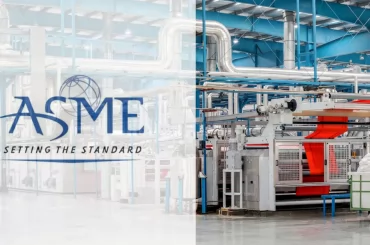The American National Standards Institute (ANSI) is popular and widely known in various industries for its role in establishing and promoting standards that ensure consistency, quality, and safety. In this article, we will explore the significance of ANSI and ANSI standard, its history, functions, and the impact of its standards on businesses, consumers, and regulatory agencies.
What Does ANSI Mean?
ANSI stands for the American National Standards Institute. It’s an organization that oversees the development of voluntary consensus standards for products, services, processes, and systems in the United States. These standards ensure quality, safety, and compatibility across various industries, helping to facilitate trade and innovation.
What Is ANSI Standard For?
The ANSI standard is used to establish guidelines and specifications for products, services, processes, and systems in various industries. These standards help ensure quality, safety, and compatibility, making it easier for businesses to produce reliable products and services and for consumers to trust and use them confidently.
What Is An ANSI Code?
An ANSI code refers to standardized numeric or alphabetic codes whose documentation is issued by ANSI to ensure uniform identification of geographic entities through all government agencies. These codes help organize and categorize the vast array of standards established by the American National Standards Institute (ANSI), making it easier for industry professionals to reference and implement the appropriate standards for their products, services, or processes.
How Is The Background History of ANSI?
The background history of ANSI dates back to 1918 when five engineering societies and three government agencies formed the American Engineering Standards Committee (AESC) to address the growing need for standardization in engineering practices.
In 1966, AESC was reorganized and became the American National Standards Institute (ANSI), operating as a private, nonprofit organization focused on coordinating and accrediting voluntary consensus standards across various industries in the United States. Since then, ANSI has played a crucial role in developing and promoting standards to enhance safety, efficiency, and innovation in American industries.
Who Can Be The Members of ANSI?
Any organization or individual with an interest in standards development and conformity assessment can become a member of ANSI. This includes businesses, government agencies, professional associations, academic institutions, and other stakeholders across a wide range of industries. ANSI membership provides opportunities to participate in the standardization process, access resources and information, and contribute to the advancement of standards that benefit society and the economy.
How Is The Process of Making ANSI Standards?
The process of making ANSI standards involves accrediting procedures of standards developing organizations to ensure they meet ANSI’s requirements for openness, balance, consensus, and due process. ANSI designates certain standards as American National Standards (ANS) when they are developed in a fair, accessible, and responsive environment.
These standards undergo consensus-building among representatives from all interested parties, public review and comment, consideration and response to comments, incorporation of accepted changes, and an appeal process for any participant alleging a lack of adherence to these principles. This rigorous process aims to accelerate market acceptance of products while enhancing consumer safety.
What Are The Standard Panels Administered by ANSI?
The American National Standards Institute (ANSI) administers nine standards panels, each focusing on specific areas of standardization:
1. ANSI Homeland Defense and Security Standardization Collaborative (HDSSC)
This panel focuses on developing standards related to homeland defense and security to ensure preparedness and resilience against potential threats.
2. ANSI Nanotechnology Standards Panel (ANSI-NSP)
The NSP works on standards for nanotechnology, addressing the unique challenges and opportunities presented by materials at the nanoscale.
3. ID Theft Prevention and ID Management Standards Panel (IDSP)
This panel develops standards aimed at preventing identity theft and managing personal identification information securely.
4. ANSI Energy Efficiency Standardization Coordination Collaborative (EESCC)
The EESCC focuses on coordinating standards to promote energy efficiency across various industries, aiming to reduce energy consumption and environmental impact.
5. Nuclear Energy Standards Coordination Collaborative (NESCC)
NESCC coordinates standards related to nuclear energy, including safety, security, and environmental considerations.
6. Electric Vehicles Standards Panel (EVSP)
The EVSP works on standards for electric vehicles, covering aspects such as charging infrastructure, safety, and interoperability.
7. ANSI-NAM Network on Chemical Regulation
This panel addresses standards related to chemical regulation, including safety, labeling, and environmental impact.
8. ANSI Biofuels Standards Coordination Panel
The Biofuels Standards Coordination Panel focuses on developing standards for biofuels production, distribution, and utilization to promote sustainability and reduce reliance on fossil fuels.
9. Healthcare Information Technology Standards Panel (HITSP)
The HITSP develops standards for healthcare information technology, aiming to improve interoperability, data exchange, and patient care in the healthcare sector.
Some FAQs About ANSI
Below we compile some of the frequently asked questions about ANSI.
1. What Is The Difference between ASME and ANSI?
The main difference between ASME and ANSI is their focus and scope: ANSI establishes and accredits performance and quality standards for products and services in a wide variety of sectors, while ASME is primarily focused on boilers and pressure vessels. In wider scope, ASME standards are specific to mechanical engineering, ANSI standard covers a broader spectrum of industries and disciplines.
2. Is ANSI Required?
ANSI Standards are generally voluntary, but adherence to ANSI standards may be required by regulatory agencies, industry organizations, or contractual agreements in certain situations. While compliance with ANSI standards is often voluntary, it can be important for ensuring quality, safety, and interoperability in various industries and products. Therefore, while ANSI membership and adherence to its standards are not mandatory, they are widely recognized and respected within many sectors.
3. Who Uses ANSI Standards?
ANSI Standards are used by a wide range of stakeholders, including businesses, government agencies, industry organizations, manufacturers, consumers, and professionals across various sectors. These standards help ensure consistency, quality, and safety in products, services, processes, and systems, benefiting both producers and consumers alike. Therefore, anyone involved in designing, producing, regulating, or using goods and services may rely on ANSI Standards to guide their practices and decisions.
4. What Is ANSI Measurement?
ANSI measurement refers to standards set by the American National Standards Institute (ANSI) to ensure uniformity and accuracy in measurements across various industries and applications. Measurements are taken and reported on the sketch or floor plan to the nearest inch or tenth of a foot, and the final square footage calculations are reported to the nearest whole square foot. These standards help establish consistent units of measurement, such as length, weight, and volume, which are essential for manufacturing, trade, and other activities where precise measurements are necessary.
5. What Is ANSI Design?
ANSI design refers to design principles and guidelines established by the American National Standards Institute (ANSI) to ensure that products, systems, and processes meet specific criteria for quality, safety, and performance. These design standards help engineers and designers create products that are reliable, efficient, and compatible with industry regulations and best practices.
6. What Is ANSI Classification?
ANSI classification refers to the categorization of standards and guidelines established by the American National Standards Institute (ANSI), determined by the total area of high-vis material, and the safety requirements of individual situations. These classifications help organize standards into different categories based on their subject matter, industry application, or level of importance. By classifying standards, ANSI ensures that users can easily locate and access the specific standards relevant to their needs within the vast array of available standards.
7. Does ANSI Verify Oil and Gas Standards?
No, ANSI itself does not verify oil and gas standards. Instead, ANSI accredits the procedures of standards-developing organizations, ensuring that their processes for developing standards meet ANSI’s requirements for openness, balance, consensus, and due process. These accredited organizations may develop oil and gas standards like API and ASME, and ANSI’s accreditation signifies that their standards were developed using a fair and transparent process.
While ANSI standard ensures the integrity of the standards development process, organizations like PetroSync provide essential training in the oil and gas industry. PetroSync offers specialized courses such as ASME training, API training, and Maintenance & Reliability training, which equip professionals with the knowledge and skills needed to meet industry standards and excel in their roles.
By participating in PetroSync’s training programs, individuals can stay updated on the latest industry practices and contribute to maintaining the highest standards of quality and safety in the oil and gas sector.
Credit header image: Freepik

SEO specialist by day, fact-checker by night. An avid reader and content writer dedicated to delivering accurate and engaging articles through research and credible sources.






